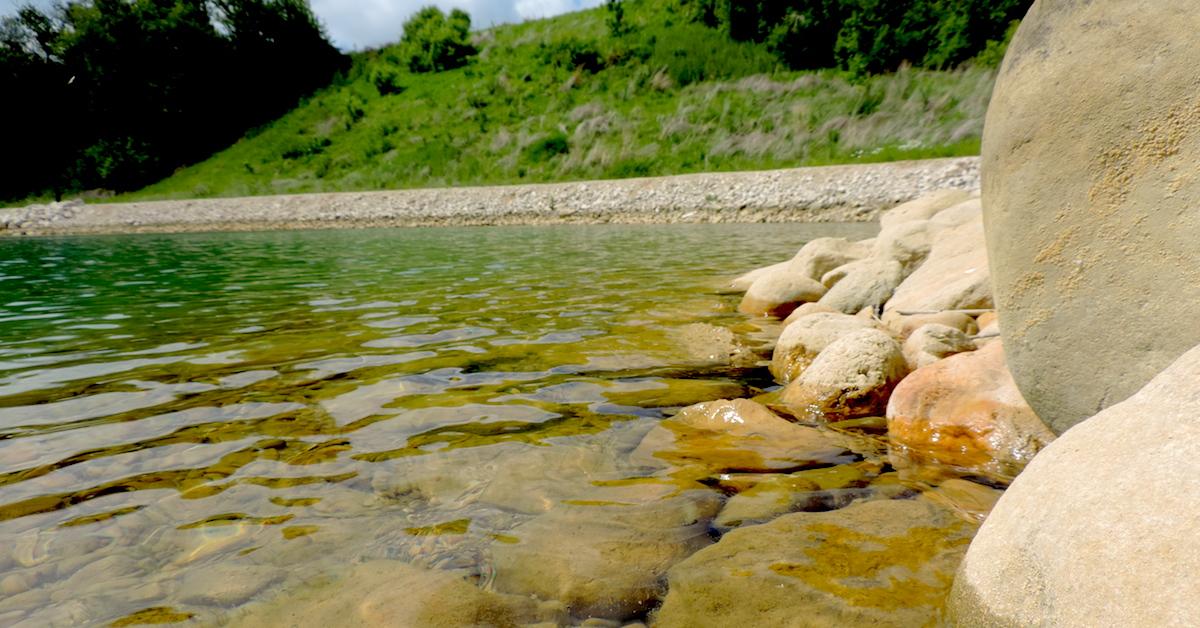6 Tips For Targeting Clear Water Bass
One of the most important things for anglers to pay attention to when arriving at the lake or river is the water clarity. Water clarity can impact every aspect of a fishing trip - from what presentations are effective, to what depth the intended species is holding.In general, any time the water clarity approaches one of the extremes, either too muddy or gin clear, the fishing tends to get tough – something that might come as a surprise to many anglers that associate clear water with healthy fisheries and good fishing. In super clear water, fish are at their absolute wariest. Clear water affords predators optimal viewing conditions, and triggers caution in all species of fish. Because clear water has such an impact on fish behavior, getting any bites at all can sometimes be difficult, especially when it’s calm and sunny. The good news though is that super clear water conditions aren’t the end of the world. If you pay attention to what you’re doing, and pay attention to the following tips, you should have no problem catching some fish in even the clearest water.
1. Stay back
Most game fish are predominantly visual feeders, and in clear water they are even more aware of their surroundings. Boat noise, the whir from a trolling motor, and other disturbances become magnified in the clear water. It’s important to stay as far back as you can to minimize the opportunities the fish have to get spooked. If you’re flipping a row of bushes, stay as far back as you can while still being able to accurately pitch. When fishing deeper, stay back and launch casts at your targets instead of getting right on top of the spot.
2. Keep the sun in front of you
One of the things that anglers seldom think about, but is of vital importance in clear water is their shadow. All fish species are instinctively trained to look up for shadows. Eagles, ospreys, and herons all hunt from above, and there is nothing that spooks any species of fish like a shadow cast over them. Concentrate on fishing into the sun, so your shadow is cast behind you. This becomes extremely important when fishing in shallow water.
3. Use lighter line
This certainly isn’t the first time you’ve read that it’s important for visibility purposes to downsize your line in super clear water. The thinner the line, the less likely it will deter a bite. Interestingly though, there’s another, less discussed reason to downsize your line in clear water – to maximize the depth and action of your baits. A crankbait fished on 8 pound line will dive significantly deeper than that same crankbait tied on 14 pound line. Same goes for plastics and jigs as well. The thinner the line, the more freely the bait will move, which will look more natural to the fish and likely result in more bites.
4. Natural colors
Despite having a whole suite of senses to determine what’s for dinner, most freshwater fish hunt primarily by sight. In clear water, they can see much better and as such become more scrutinizing in what they eat. In dirty water, your black and blue jig gets bites because it provides an excellent silhouette for the fish to track. In clear water though, that same jig looks unnatural and your results will suffer. Instead, try a green or brown jig that resembles a crayfish. As a rule, in clear water greens, browns, and translucents will be more effective than blacks, blues, and chartreuses – for all lure categories.
5. Look for shade
Even in the clearest of clear water there are ways to maximize the element of surprise and tilt the odds in your favor. One of the most effective is to target shade. Shade acts just like cloud cover and decreases visibility, increases activity, and relaxes all fish species. By targeting shady pockets, docks, and other shady spots, the fish will often be less finicky and more inclined to bite.
6. Downsize
Because fish of all species can see extremely well in clear water, they are going to see your bait a lot sooner than they would in dirty water. Because of that, it’s important to provide them a realistic profile, often that means decreasing the size of your presentations. If you are catching them on a shakey head with a 7 inch finesse worm, try downsizing to a 4 ½ inch worm in clear water – Because of the increase in visibility, smaller baits have just as much drawing power as bigger baits, and they maximize your overall bite opportunities.And most important of all, be safe and have fun!
Updated June 11th, 2015 at 2:01 PM CT


